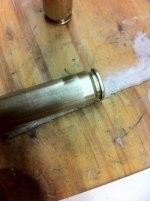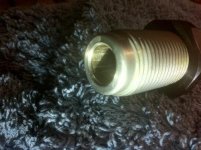T
tim3
Guest
Hi everyone....im very new to loading and really dont have any experienced people to help me so i thought i’d ask in a forum & google pointed here so anyway , im here.
These are 243 herters shells & look to be in great condition but they are getting what i feel is way too tight down low thus im getting heavy scratching (all very well lubed). Time to throw them out ?

These are 243 herters shells & look to be in great condition but they are getting what i feel is way too tight down low thus im getting heavy scratching (all very well lubed). Time to throw them out ?



